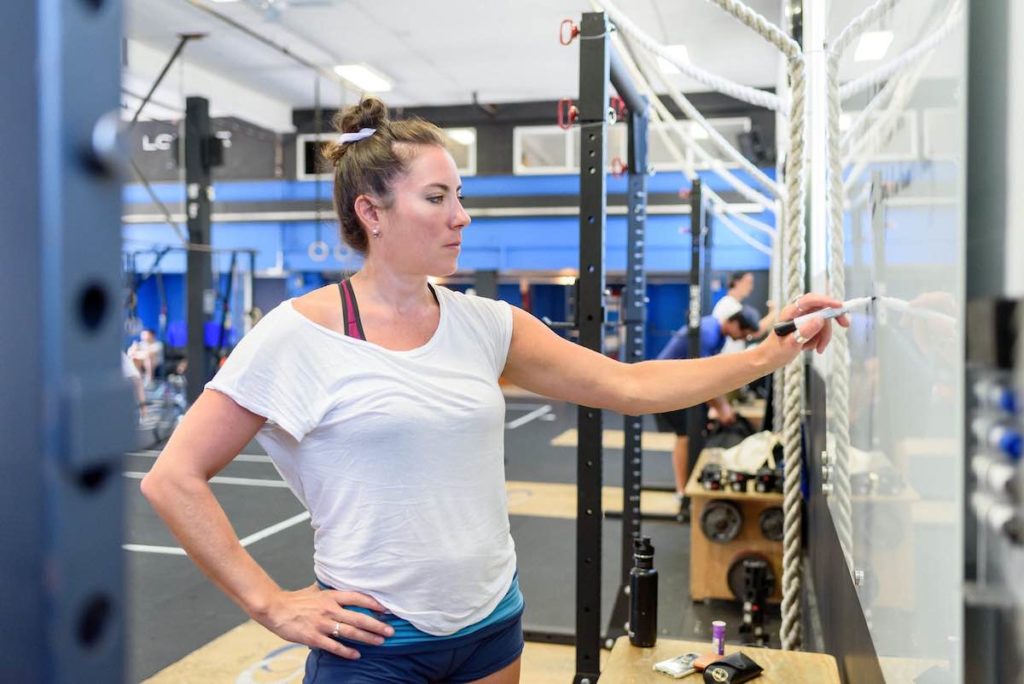If you have been coaching for a while, and especially if you have been doing any individual program design, you probably appreciate the importance of assessing your clients before you start building their program.
As I continue to dig into OPEX’s Coaching Certificate Program (CCP), I am more and more sold on the concept that if you’re not assessing your clients individually, you’re basically just guessing.
In short, a thorough assessment gives me a starting point for each client, one that looks at their individual needs and goals, as well as their priorities in life, training history, and, of course, their physical abilities.
And I don’t think this has to change just because you’re working with someone remotely, which more and more coaches are starting to do during these never-ending pandemic days. Sure, some logistical things might look slightly different in a remote setting, but generally assessment is assessment.
Following the following four concepts is a simple way to assess a new client, be it in person or remotely:
Get to know them in a one-on-one meeting
The easiest way to start with a new client is via a one-on-one consult. Though we might all be tired of Zoom, having that video feedback is more intimate than a phone call, in my opinion, and way easier to build trust, read body language etc.
During this time, the most important thing is to gather as much information about this person as you can. Find out what they’re looking for. Dig into what is driving them to get fit. Find out about their goals, wants, priorities, and the general lifestyle they live.
Dig beyond surface-level answers. This means: Ask the hard questions. Address the elephant in the room.
Assess how they move
While this is harder to do remotely than in person, it’s still important you see videos, or better yet hop on another Zoom call with the new client to see how they move. It’s also easier to instruct via Zoom than having them send videos after-the-fact.
While we all take a slightly different approach here, I generally like to check out their squat, their lunge, their shoulder extension, flexion, internal and external rotation, their ability to extend and flex their spine, as well as how well their ankles move.
Again, the OPEX movement screening is a great one, and includes a squat and lunge test, a toe touch test, the scratch test (to check shoulder health), as well as an active straight leg test and the client’s ability to hold a front, reverse and side plank.
Assess their endurance and stamina
Finally, it’s important to gather information to see how conditioned your client is.
There are various ways to do this, but the easiest way is to keep the movement non-technical, so you get a true sense of their capacity.
For example, an Airbike is non-technical and low impact, and anyone can do it. A rowing machine or a swimming test, for example, while potential useful, definitely require more technical capacity, and thus might not give you a truly accurate idea of their ability (aka someone could be super conditioned but simply doesn’t know how to swim, or has never been taught proper technique on a rowing machine).
For many years, I used a 400 meter medicine ball run, which worked well, but now I use a 10-minute AirBike test for calories and average watts. It tells me how well they’re both able to pace themselves and sustain the ability to work over the course of 10 minutes.
Find out about their body composition
Best case scenario, your client is willing to have their body composition analyzed via a BodPod or InBody machine, which will give you data such as their height, their weight, their lean body mass, their basal metabolic weight, and any other metrics various body composition machines tell you, such as where they’re carrying extra fat etc.
If they’re not able to formally get their body composition analyzed, it’s important to at least determine their height and weight and figure out if they’re looking to lose weight, gain weight, build strength etc.
Getting information here will also give you a starting point. Often people don’t see the progress they’re making, so keeping track of this type of information from the start will go a long way down the road in terms of tracking their progress over time.
Bottom line
With any new remote client, take the time to meet with them via video chat for 30 minutes to an hour, and a second time to check out their movement patterns. Then have them complete a work capacity test and log their score, and find out as much as you can about their body composition.
Once you gather the above information, you’ll be in a much better position to plan a program that will put them on the path to long-term success.
Editor’s note: This article is an op-ed. The views expressed herein and in the video are the author’s and don’t necessarily reflect the views of BarBend. Claims, assertions, opinions, and quotes have been sourced exclusively by the author.
Images courtesy @jelgerandtanja

